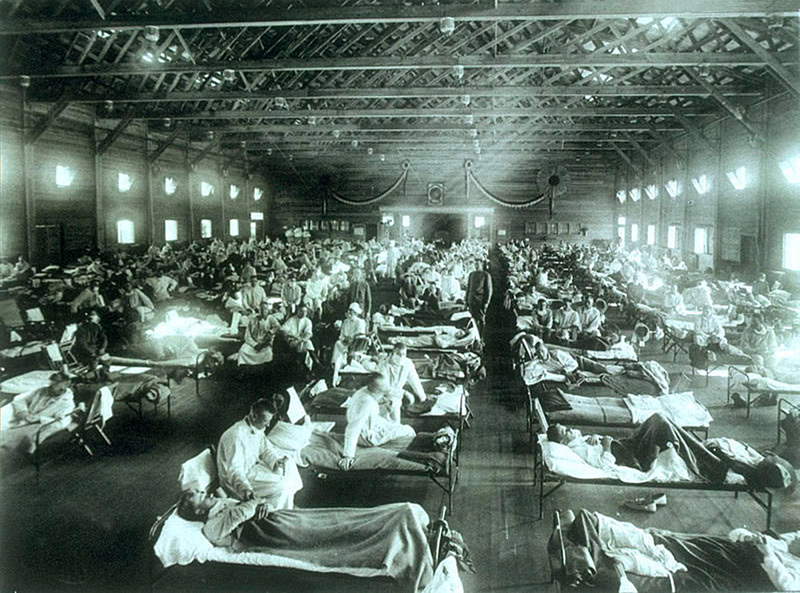The influenza pandemic of 1918, also known as the Spanish flu, is the most severe influenza outbreak to be recorded in recent history.
It is estimated that the 1918 pandemic killed at least 50 million people worldwide. The pandemic, which spread worldwide from 1918–1919, was caused by an H1N1 virus with genes of avian origin. Unlike other influenza pandemics, the 1918 pandemic had the highest mortality among healthy people in the 20–40 years age range. It is not known where the flu originated from or which properties made it so deadly. No other influenza pandemic has reached the magnitude of the 1918 pandemic (Figure 1).

Experts believe that there is another influenza pandemic on the way, and anticipate that it will be one of the world’s greatest infectious disease challenges. The big question is whether or not we will be prepared for it. The 1918 pandemic shows us that healthy people can be as vulnerable as the usual highly-susceptible populations, including young children, older adults, pregnant women, and immunocompromised individuals. People may have little to no immunity to a new pandemic virus. Control efforts for the 1918 pandemic were limited to non-pharmaceutical interventions such as good personal hygiene, use of disinfectants, and quarantine. Today, many organizations are preparing for the next influenza pandemic. The US Centers for Disease Control and Prevention is working on scientific and medical advances to fight seasonal and pandemic flu. Since the 1918 pandemic, there have been vaccines to prevent flu, antiviral drugs, and a global influenza surveillance system set up by the World Health Organization (WHO) member states to monitor flu activity. WHO focuses on strengthening health systems in order to be better prepared for influenza pandemic threats. WHO also provides member states with strategic guidance, technical support, and coordination of activities.
Even though these advances each represent a step in the right direction, there are still challenges that need to be addressed in order to effectively fight the next flu pandemic, such as a need for standards for reporting epidemiological data. The 1918 pandemic is a reminder that influenza is unpredictable, and we should be ready with an effective response.
Related Reports
How well do you really know your competitors?
Access the most comprehensive Company Profiles on the market, powered by GlobalData. Save hours of research. Gain competitive edge.

Thank you!
Your download email will arrive shortly
Not ready to buy yet? Download a free sample
We are confident about the unique quality of our Company Profiles. However, we want you to make the most beneficial decision for your business, so we offer a free sample that you can download by submitting the below form
By GlobalData- GlobalData (2018). Expert Insight: Public-Private Partnerships Continue to Play a Critical Role in Influenza Vaccine R&D, March 2018, GDHC1675EI
- GlobalData (2018). Expert Insight: Poor Seasonal Influenza Vaccine Efficacy Necessitates a Shift Away from Egg-Based Manufacturing, February 2018, GDHC1624EI
- GlobalData (2018). Expert Insight: Lower Flu Vaccine Uptake and Multiple Circulating Flu Strains May Be Causing High Flu Index in Texas Cities, February 2018, GDHC1587EI
- GlobalData (2018). Expert Insight: Is It Time for Europe to Embrace the Quadrivalent Influenza Vaccine?, January 2018, GDHC1554EI
- GlobalData (2016). PharmaPoint: Seasonal Influenza Vaccines – Global Drug Forecast and Market Analysis to 2025, October 2016, GDHC130PIDR
For more insight and data, visit the GlobalData Report Store – Hospital Management is part of GlobalData Plc.









Related Company Profiles
U.S. Centers for Disease Control and Prevention
World Health Organization